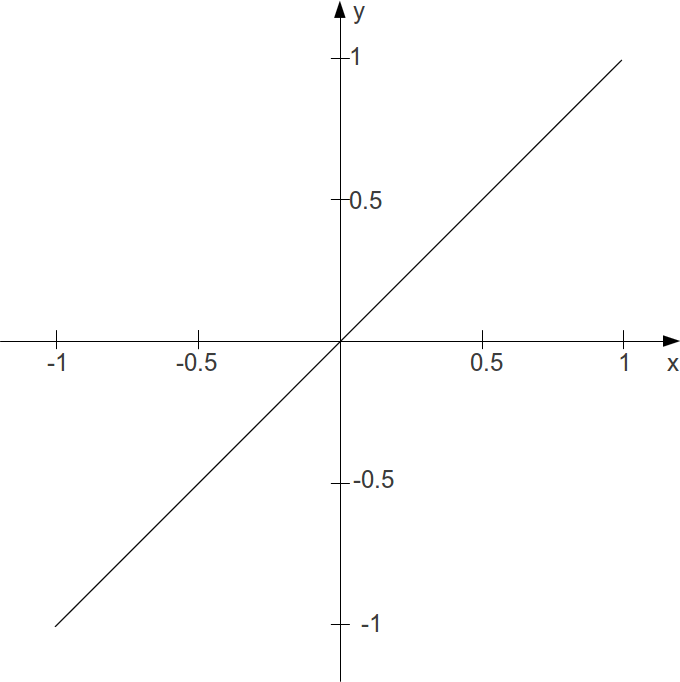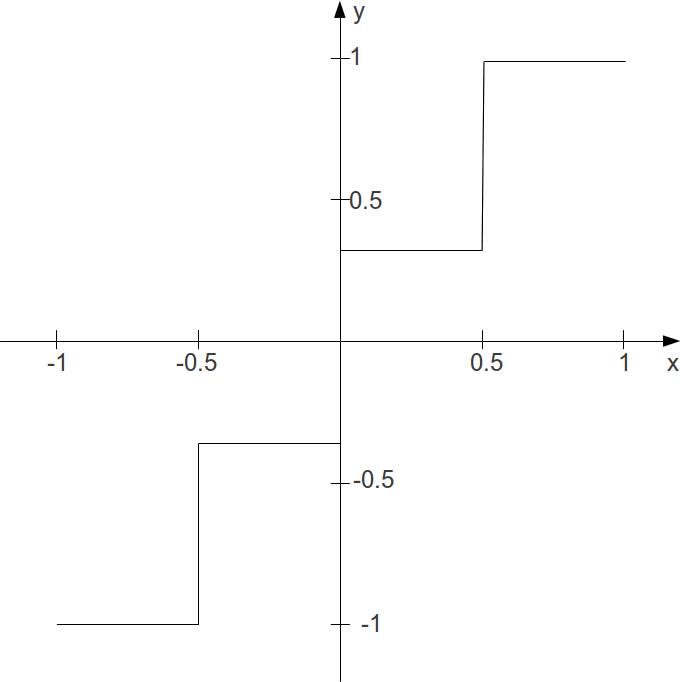CSOUND Español
Csound: AMRMWAVESHAPING
AM / RM / WAVESHAPING
AM / RM / WAVESHAPING
An introduction as well as some background theory of amplitude modulation, ring modulation and waveshaping is given in the fourth chapter entitled "sound-synthesis". As all of these techniques merely modulate the amplitude of a signal in a variety of ways, they can also be used for the modification of non-synthesized sound. In this chapter we will explore amplitude modulation, ring modulation and waveshaping as applied to non-synthesized sound.1
Una introducción, así como algunos teoría de fondo de modulación de amplitud, modulación de anillo y wavehaping se da en el cuarto capítulo titulado síntesis de sonido. Como todas estas técnicas simplemente modulan la amplitud de una señal de una variedad de formas, también pueden usarse para la modificación de sonido no sintetizado. En este capítulo vamos a explorar la modulación de amplitud, la modulación de anillo y wavehaping como se aplica al sonido no sintetizado.
AMPLITUDE MODULATION
AMPLITUD MODULADA
With "sound-synthesis", the principle of AM was shown as a amplitude multiplication of two sine oscillators. Later we've used a more complex modulators, to generate more complex spectrums. The principle also works very well with sound-files (samples) or live-audio-input.
Con la síntesis de sonido, el principio de AM se demostró como una multiplicación de la amplitud de dos osciladores senos. Más tarde hemos utilizado un modulador más complejo, para generar espectros más complejos. El principio también funciona muy bien con los archivos de sonido (muestras) o la entrada de audio en vivo.
Karlheinz Stockhausens "Mixtur für Orchester, vier Sinusgeneratoren und vier Ringmodulatoren” (1964) was the first piece which used analog ringmodulation (AM without DC-offset) to alter the acoustic instruments pitch in realtime during a live-performance. The word ringmodulation inherites from the analog four-diode circuit which was arranged in a "ring".
Karlheinz Stockhausens Mixtur für Orchester, vier Sinusgeneratoren und vier Ringmodulatoren" (1964) fue la primera pieza que utilizó ringmodulation analógico (AM sin DC-offset) para alterar el pitch de los instrumentos acústicos en tiempo real durante un live-performance. La palabra ringmodulation hereda del circuito analógico de cuatro diodos que estaba dispuesto en un anillo.
In the following example shows how this can be done digitally in Csound. In this case a sound-file works as the carrier which is modulated by a sine-wave-osc. The result sounds like old 'Harald Bode' pitch-shifters from the 1960's.
En el siguiente ejemplo se muestra cómo esto se puede hacer digitalmente en Csound. En este caso, un archivo de sonido funciona como el portador que es modulado por un oscilador de onda senoidal. El resultado suena como el viejo Harald Bode pitch-shifters de la década de 1960.
EXAMPLE: 05F01_RM_modification.csd
<CsoundSynthesizer>
<CsOptions>
-o dac
</CsOptions>
<CsInstruments>
sr = 48000
ksmps = 32
nchnls = 1
0dbfs = 1
instr 1 ; Ringmodulation
aSine1 poscil 0.8, p4, 1
aSample diskin2 "fox.wav", 1, 0, 1, 0, 32
out aSine1*aSample
endin
</CsInstruments>
<CsScore>
f 1 0 1024 10 1 ; sine
i 1 0 2 400
i 1 2 2 800
i 1 4 2 1600
i 1 6 2 200
i 1 8 2 2400
e
</CsScore>
</CsoundSynthesizer>
; written by Alex Hofmann (Mar. 2011)
WAVESHAPING
In chapter 04E waveshaping has been described as a method of applying a transfer function to an incoming signal. It has been discussed that the table which stores the transfer function must be read with an interpolating table reader to avoid degradation of the signal. On the other hand, degradation can be a nice thing for sound modification. So let us start with this branch here.
En el capítulo 04E, el modelado de onda se ha descrito como un método para aplicar una función de transferencia a una señal entrante. Se ha discutido que la tabla que almacena la función de transferencia debe leerse con un lector de tabla de interpolación para evitar la degradación de la señal. Por otro lado, la degradación puede ser algo agradable para la modificación del sonido. Comencemos con esta rama aquí.
Bit Depth Reduction
If the transfer function itself is linear, but the table of the function is small, and no interpolation is applied to the amplitude as index to the table, in effect the bit depth is reduced. For a function table of size 4, a line becomes a staircase:
Si la función de transferencia en sí es lineal, pero la tabla de la función es pequeña, y no se aplica interpolación a la amplitud como índice a la tabla, en efecto la profundidad de bits se reduce. Para una tabla de funciones de tamaño 4, una línea se convierte en una escalera:
Bit Depth = high

Bit Depth = 2

This is the sounding result:
Este es el resultado sonoro:
EXAMPLE 05F02_Wvshp_bit_crunch.csd
<CsoundSynthesizer>
<CsOptions>
-odac
</CsOptions>
<CsInstruments>
sr = 44100
ksmps = 32
nchnls = 2
0dbfs = 1
giTrnsFnc ftgen 0, 0, 4, -7, -1, 3, 1
instr 1
aAmp soundin "fox.wav"
aIndx = (aAmp + 1) / 2
aWavShp table aIndx, giTrnsFnc, 1
outs aWavShp, aWavShp
endin
</CsInstruments>
<CsScore>
i 1 0 2.767
</CsScore>
</CsoundSynthesizer>
;example by joachim heintz
Transformation and Distortion
Transformación y distorsión
In general, the transformation of sound in applying waveshaping depends on the transfer function. The following example applies at first a table which does not change the sound at all, because the function just says y = x. The second one leads aready to a heavy distortion, though "just" the samples between an amplitude of -0.1 and +0.1 are erased. Tables 3 to 7 apply some chebychev functions which are well known from waveshaping synthesis. Finally, tables 8 and 9 approve that even a meaningful sentence and a nice music can regarded as noise ...
En general, la transformación del sonido en la aplicación de wavehaping depende de la función de transferencia. El siguiente ejemplo se aplica al principio a una tabla que no cambia el sonido en absoluto, porque la función simplemente dice y = x. El segundo conduce a una fuerte distorsión, aunque sólo se borran las muestras entre una amplitud de -0,1 y 0,1. Las Tablas 3 a 7 aplican algunas funciones de chebychev que son bien conocidas por la síntesis de ondas. Finalmente, las tablas 8 y 9 aprueban que incluso una oración significativa y una buena música pueden considerarse como ruido ...
EXAMPLE 05F03_Wvshp_different_transfer_funs.csd
<CsoundSynthesizer>
<CsOptions>
-odac
</CsOptions>
<CsInstruments>
sr = 44100
ksmps = 32
nchnls = 2
0dbfs = 1
giNat ftgen 1, 0, 2049, -7, -1, 2048, 1
giDist ftgen 2, 0, 2049, -7, -1, 1024, -.1, 0, .1, 1024, 1
giCheb1 ftgen 3, 0, 513, 3, -1, 1, 0, 1
giCheb2 ftgen 4, 0, 513, 3, -1, 1, -1, 0, 2
giCheb3 ftgen 5, 0, 513, 3, -1, 1, 0, 3, 0, 4
giCheb4 ftgen 6, 0, 513, 3, -1, 1, 1, 0, 8, 0, 4
giCheb5 ftgen 7, 0, 513, 3, -1, 1, 3, 20, -30, -60, 32, 48
giFox ftgen 8, 0, -121569, 1, "fox.wav", 0, 0, 1
giGuit ftgen 9, 0, -235612, 1, "ClassGuit.wav", 0, 0, 1
instr 1
iTrnsFnc = p4
kEnv linseg 0, .01, 1, p3-.2, 1, .01, 0
aL, aR soundin "ClassGuit.wav"
aIndxL = (aL + 1) / 2
aWavShpL tablei aIndxL, iTrnsFnc, 1
aIndxR = (aR + 1) / 2
aWavShpR tablei aIndxR, iTrnsFnc, 1
outs aWavShpL*kEnv, aWavShpR*kEnv
endin
</CsInstruments>
<CsScore>
i 1 0 7 1 ;natural though waveshaping
i 1 + . 2 ;rather heavy distortion
i 1 + . 3 ;chebychev for 1st partial
i 1 + . 4 ;chebychev for 2nd partial
i 1 + . 5 ;chebychev for 3rd partial
i 1 + . 6 ;chebychev for 4th partial
i 1 + . 7 ;after dodge/jerse p.136
i 1 + . 8 ;fox
i 1 + . 9 ;guitar
</CsScore>
</CsoundSynthesizer>
;example by joachim heintz
Instead of using the "self-built" method which has been described here, you can use the Csound opcode distort. It performs the actual waveshaping process and gives a nice control about the amount of distortion in the kdist parameter. Here is a simple example:2
En lugar de utilizar el método auto-construido que se ha descrito aquí, puede utilizar el Csound opcode distorsionar. Realiza el proceso real de wavehaping y da un control agradable sobre la cantidad de distorsión en el parámetro kdist. Aquí hay un ejemplo sencillo: 2
EXAMPLE 05F04_distort.csd
<CsoundSynthesizer>
<CsOptions>
-odac
</CsOptions>
<CsInstruments>
sr = 44100
ksmps = 32
nchnls = 2
0dbfs = 1
gi1 ftgen 1,0,257,9,.5,1,270 ;sinoid (also the next)
gi2 ftgen 2,0,257,9,.5,1,270,1.5,.33,90,2.5,.2,270,3.5,.143,90
gi3 ftgen 3,0,129,7,-1,128,1 ;actually natural
gi4 ftgen 4,0,129,10,1 ;sine
gi5 ftgen 5,0,129,10,1,0,1,0,1,0,1,0,1 ;odd partials
gi6 ftgen 6,0,129,21,1 ;white noise
gi7 ftgen 7,0,129,9,.5,1,0 ;half sine
gi8 ftgen 8,0,129,7,1,64,1,0,-1,64,-1 ;square wave
instr 1
ifn = p4
ivol = p5
kdist line 0, p3, 1 ;increase the distortion over p3
aL, aR soundin "ClassGuit.wav"
aout1 distort aL, kdist, ifn
aout2 distort aR, kdist, ifn
outs aout1*ivol, aout2*ivol
endin
</CsInstruments>
<CsScore>
i 1 0 7 1 1
i . + . 2 .3
i . + . 3 1
i . + . 4 .5
i . + . 5 .15
i . + . 6 .04
i . + . 7 .02
i . + . 8 .02
</CsScore>
</CsoundSynthesizer>
;example by joachim heintz